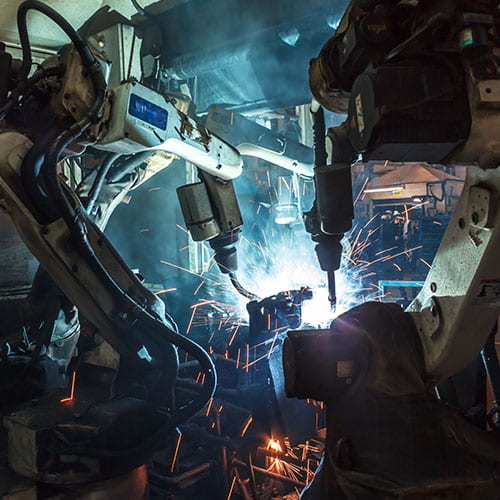By Janelle Clark
Graduate student, Department of Mechanical Engineering, Rice University
The benefits of increased automation are already seen today, where tasks once completed by people are now performed by programs and machines. On a smaller scale, this includes automatic bill reminders and payments, direct deposits, vending machines, automatic car washes and even tailored suggestions from Amazon and Netflix. Larger scale examples occur in manufacturing — including knitting machines, automated car assemblies, and machines for agriculture and construction. While growth in automation has several benefits, many people are afraid automation will take jobs away from hardworking Americans. However, automation can be used in a way that complements the workforce, shifting responsibilities rather than creating competition for jobs. The congressional bill — the Workforce DATA Act — is a promising program that could help to gather data on which jobs are at risk of being replaced by automation while also finding ways to retrain workers for new jobs.
Automation advancements primarily occur through robot design and artificial intelligence. Robots provide a way of completing real-world physical tasks, such as assembling cars, whereas artificial intelligence involves the use of algorithms, or human-written instructions, to complete virtual tasks. Apple’s Siri and Amazon’s Alexa are examples of AI virtual assistant technologies that run on such algorithms. Automation has unburdened us from repetitive and time-consuming work by streamlining complex data analyses, compiling routine reports and removing humans from dangerous or repetitive work environments. These changes can create a safer and more efficient production environment as well as cheaper prices of goods for consumers. However, as automation advances, it also dramatically changes the employment landscape.
The impending transition is not a welcome one for many. A 2017 study projected that 47% of American jobs will be replaced by automation in the next 20 years. Jobs held by those with lower education levels have a greater risk of being automated. Already, 6% of U.S. adults have said they have lost pay, working hours or their job due to automation. In addition, 58% of U.S. adults believe that there should be limits on the number of jobs businesses replace with machines, even if machine labor is better and cheaper than human labor.
However, in some cases, automation is complimentary instead of competitive. For example, ATM deployment did not remove bank jobs; instead duties shifted to include relationship banking, and tellers were distributed over a larger number of locations. Between 1995 and 2010 the number of ATMS increased from 100,000 to 400,000. Still, the number of bank tellers remained about the same as 15 years prior. From 1980 to 2010, the number of bank tellers even rose from 500,000 to 550,000. Another example is Robonaut, an anthropomorphic robot that completes routine and dangerous tasks, to relieve the human personnel on board the International Space Station. In education, teachers have also begun to use automation tools to enrich and streamline their courses by automating administrative tasks and utilizing online course design and grading tools. Each of these examples has a common theme of using automation to allow people to spend more time on tasks that require creativity, persuasion, and social intelligence, things which appear relatively immune to automation.
To better understand the factors and impacts of automation on the workforce, we need to understand which jobs will be impacted. The Workforce DATA Act, proposed in 2019, would fund the assessment of automation’s impact on jobs and identify sectors and individuals that will be most affected by automation. This data would help inform policy development that could guide the employment transition, allowing for a responsible evolution in our society that doesn’t leave individuals behind. With appropriate preparation, we can continue to embrace advancements that enhance our working environments and capabilities, ultimately improving our quality of life on and off the clock.
This blog post is part of the Baker Institute Science and Technology Policy Program’s Developing Civic Scientist Leaders project.
